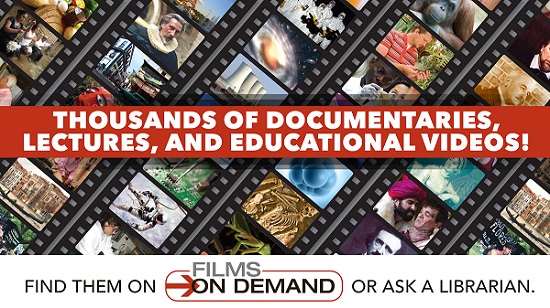Do we seem to be missing a classic ’90s gem from our collection? Let us know via this convenient form, and we’ll do our best to abide.
Library News
Booth Library Now Offers Free Online Access to the New York Times
Posted on December 11th, 2023
EIU students, faculty, and staff now have free online access to the New York Times through Booth Library! We are thrilled to offer this new service to better serve our students and the EIU Community as a whole.
The complimentary subscription is available to anyone with an eiu.edu email address- including retired employees and emeritus members!
Online access to the New York Times through EIU Library includes:
- 24/7 Breaking News
- Archives (dating back to 1851) timesmachine.nytimes.com/browser
- Augmented Reality/Virtual Reality – found in the App; NYT stories told through enhanced technology
- Daily 360 content – two dimensional, 360° views (with mobile device or using a mouse)
- Podcasts (including The “Daily” podcast)
- All multimedia, including video, photography, VR features, and new multimedia to come.
- Newsletters (there are a variety of topics that you may subscribe to)
- Spanish and Mandarin Chinese versions of NYTimes.com.
Activate your access to The New York Times, compliments of Booth Library here.

2021 Periodical and Standing Order Review
Posted on March 2nd, 2021
Booth Library’s annual Periodical and Standing Order Review is underway. The lists of periodicals and standing orders selected for cancellation are now available for review. This annual exercise is designed to ensure that library collections continue to meet the needs of library users. Titles are added or canceled based on input from the relevant academic departments.
Questions about the review can be addressed by individual subject librarians.
Digital Library of Illinois now includes magazines!
Posted on January 27th, 2021
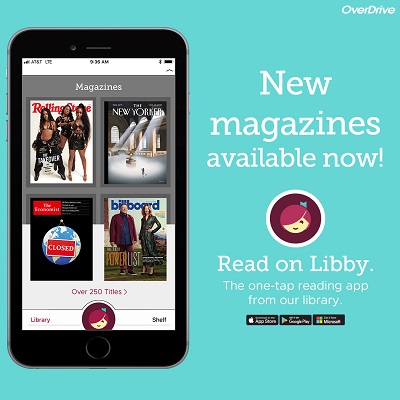
Booth Library now offers access to a large collection of digital magazines through the Digital Library of Illinois. You can borrow and read the magazines using Libby or any other method you currently use to access OverDrive titles. Magazines don’t count toward your checkout limits.
The collection has over 3200 magazines of current and popular interest on a wide variety of subjects. All are available for simultaneous use, with no waiting or restrictions.
Happy browsing! For any questions, please Ask a Librarian.
Elections: Films On Demand
Posted on January 27th, 2021
This year’s contentious Presidential election had the greatest voter turnout in history. With so much conflicting information flying around our 24 hour news cycle and so many claims of “fake news,” it is nice to know there are sites like Booth Library’s streaming video resource Films On Demand, to show us some historical context. Films On Demand allows you to explore hundreds of films dedicated to elections, government and political topics. Many of these films showcase historical elections and the lead-up to current elections such as 2012 and 2016, featuring political rallies, candidate interviews, the community reactions, polls, and outcomes. There are even some very historical elections such as 1860, 1800, and the public’s reactions to them at the time.
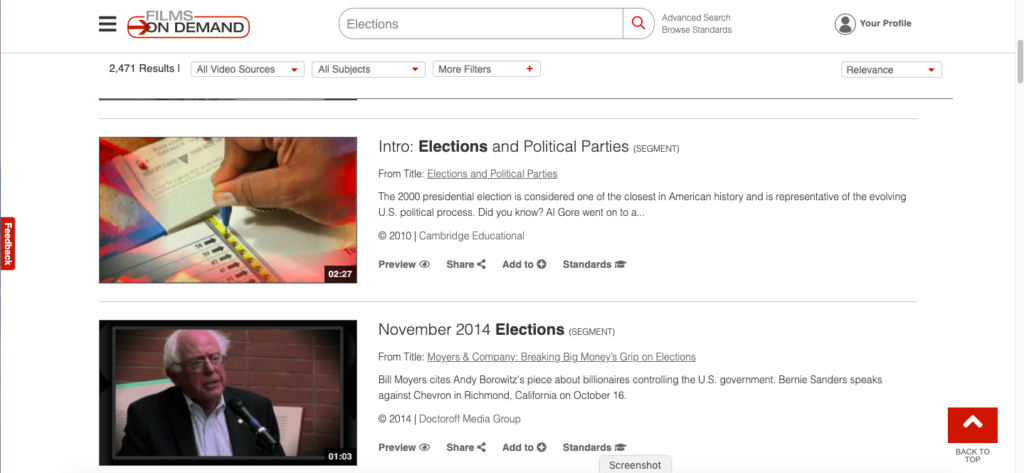
You can also preview the video you are watching before opening up a new tab when watching. Within each of these videos, you can august settings for subtitles, share it, add it to a playlist, or cite it if you are using it as a source for your research. Along with every video, there is a sidebar to the right to help navigate segments of the video or follow the audio in the video transcript. Segments are similar to a table pf contents that connects with timestamps for specific moments. They can be clicked on to move to that place in the film. The transcripts have a search fear to help find terms used in the video. Transcripts can also be downloaded.
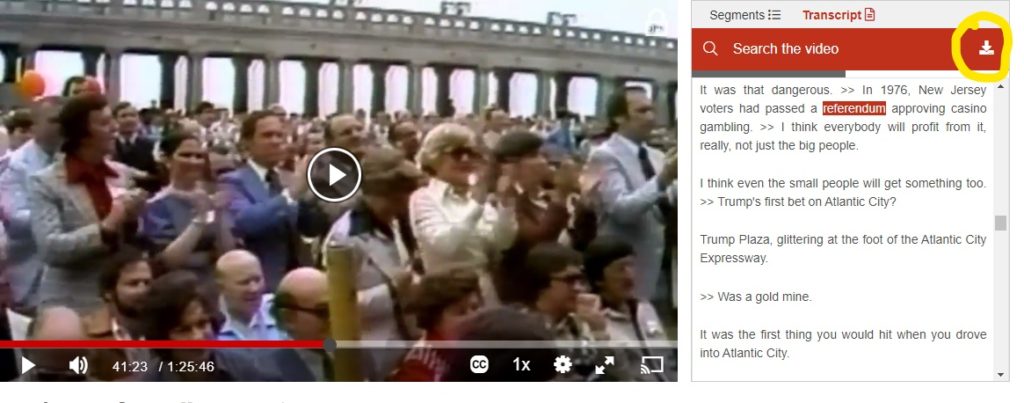
Explore Music from Films On Demand
Posted on January 11th, 2021
One of the highlights of the Film On Demand Streaming video resource is the huge variety of videos about music that are available. You can search for artists, genres or famous pieces of music to explore the collection, but the sidebar icon ![]() to the left of the Films On Demand logo
to the left of the Films On Demand logo  allows you to browse by several different musical categories.
allows you to browse by several different musical categories.
Films On Demand has are over 1,600 videos related to Music. There are sections on music appreciation, music history, world music, documentaries/live performances. There are even special series such as Great Film Composers: music of the movies, Features of current and historical rock performers like Elvis, Queen, Metallica and Green Day. Suppose you need to learn more about a specific style of music. You can find videos on Gospel, Music from Zimbabwe, or Opera, and many more.
But in addition to recordings and performances, other educational films and documentaries go into depth in how music is composed and the structure of what makes each genre of music unique. There are videos on how different forms of music affect us and how they can benefit, such as videos on music therapy and the human experience.
Whatever your interest in music, Films On Demand will have something for you.

Film On Demand Quizlets
Posted on November 20th, 2020
Booth’s new streaming video service, Films On Demand, has a great new quiz feature for professors.
The quiz feature is beneficial because professors can test students during the video! It also helps to ensure that students watch and retain information from the assigned videos.
The way it is done is on the side of the video. There is a section called transcripts, which is like a table of contents, where you can search for keywords used within the video. Next to it is the quiz link. When creating it, it can be named, have an unlimited amount of questions, and be anything from multiple choices to true or false. It can be timed as well. There is an option to get test results sent to you via email and an option to clarify instructions on the quiz and how to submit it. These quizzes can be shared through links or online classrooms if a professor wishes to create a class section on Film On Demand. The snapshots below illustrate these features.
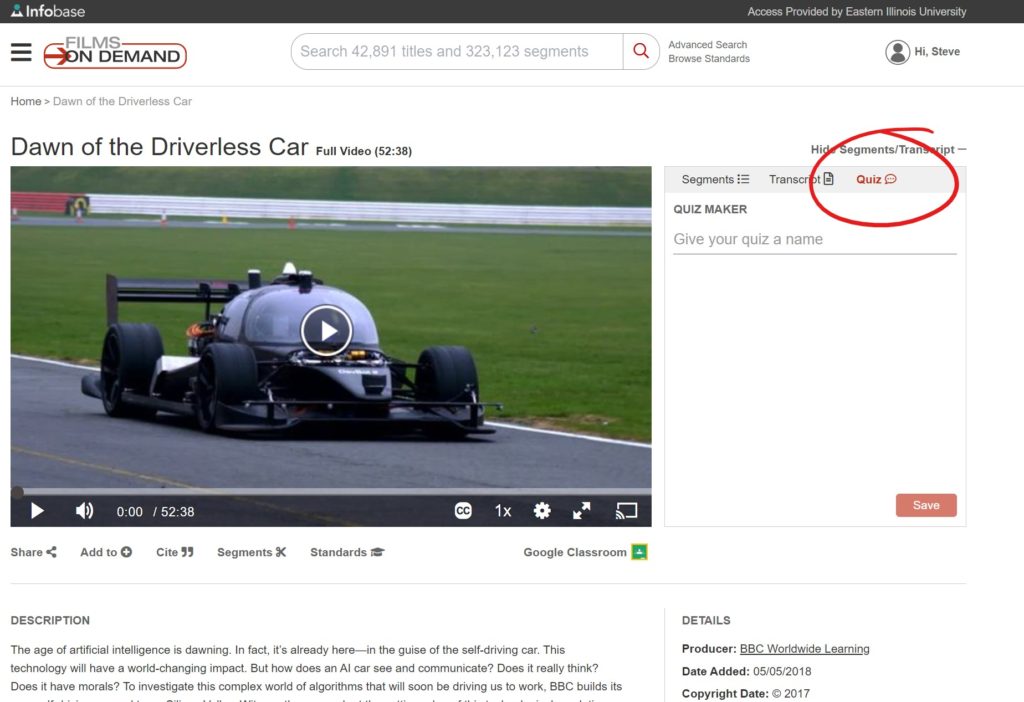
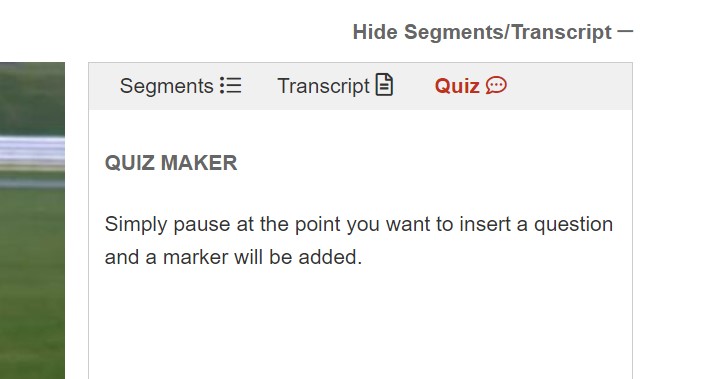
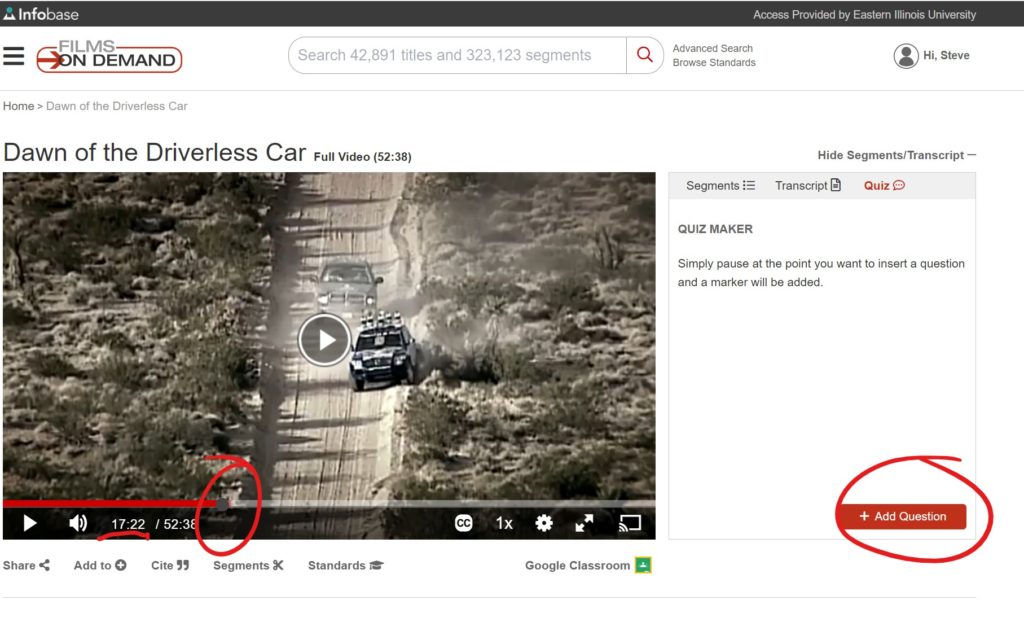
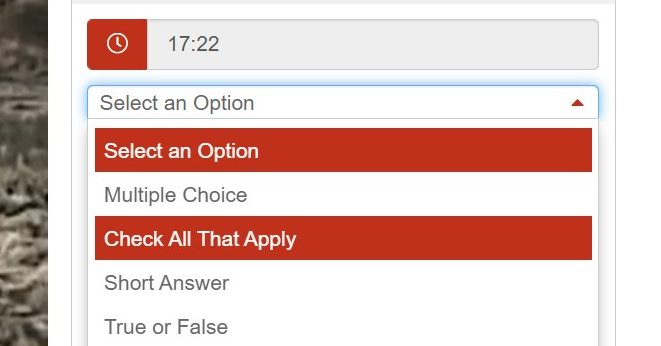
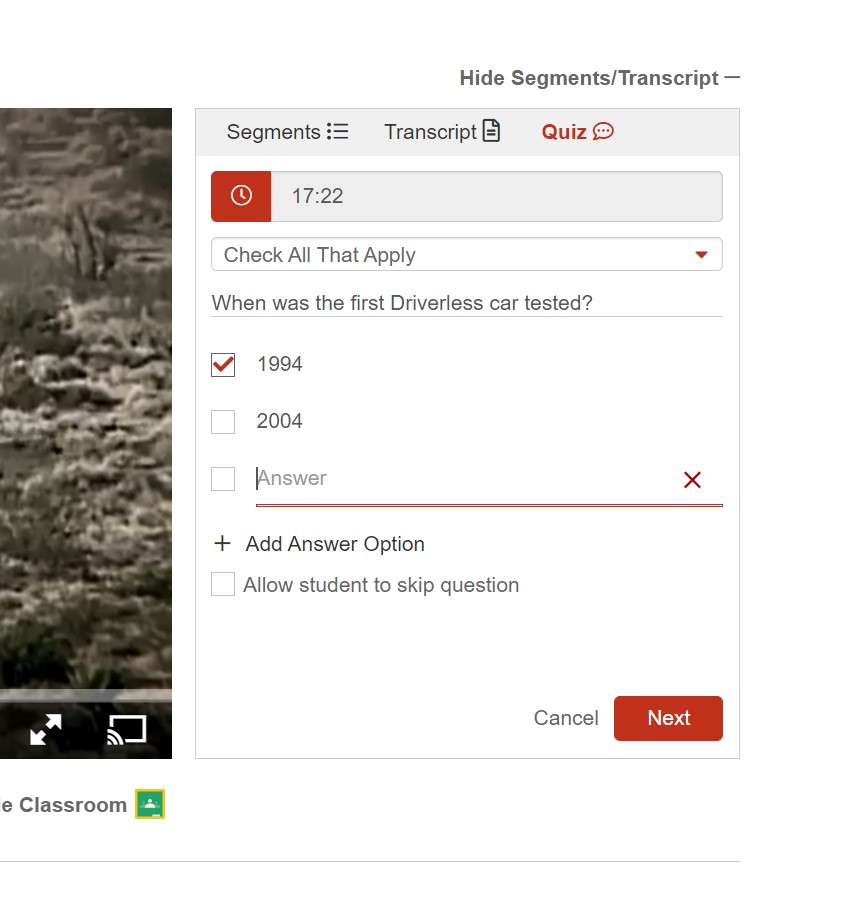
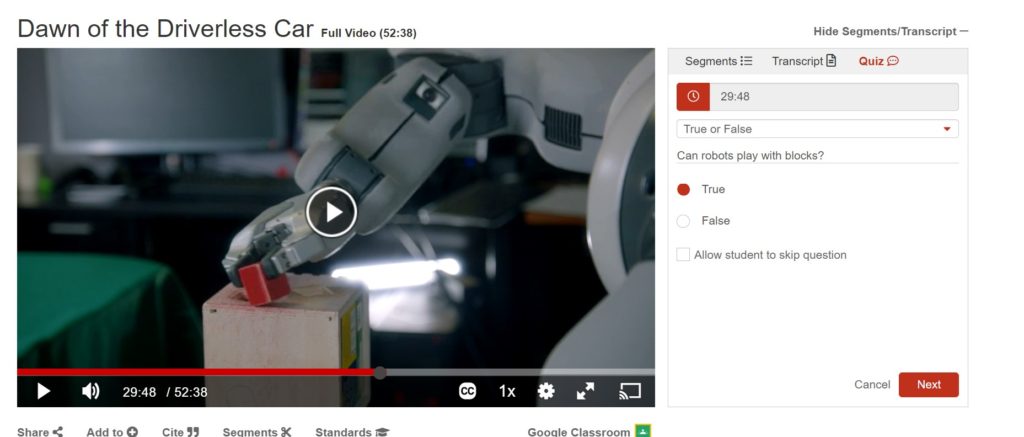
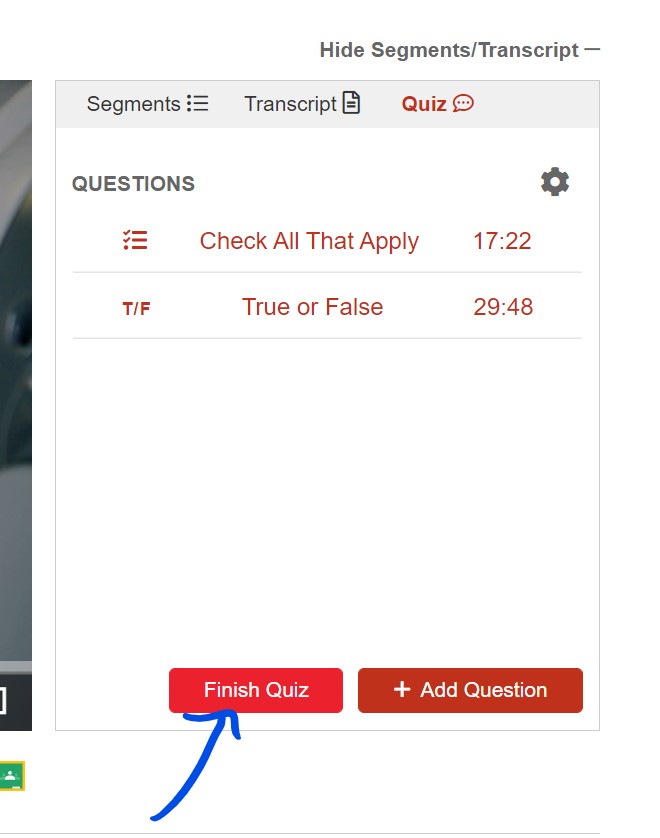
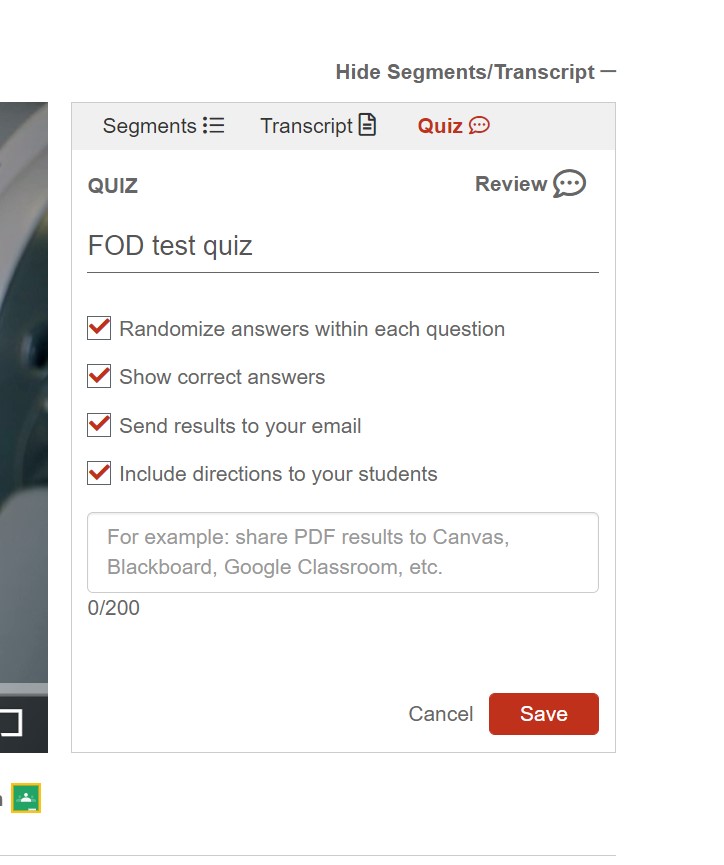
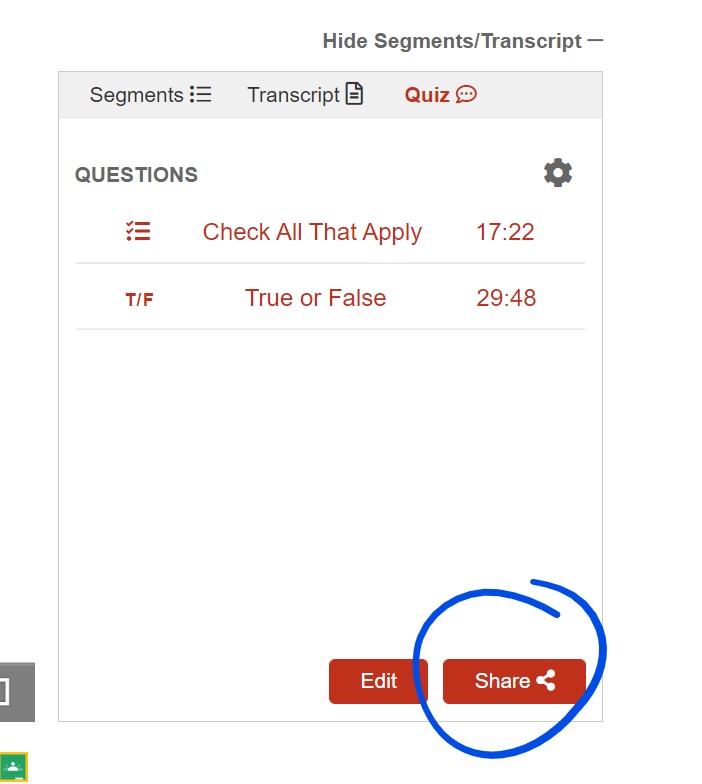
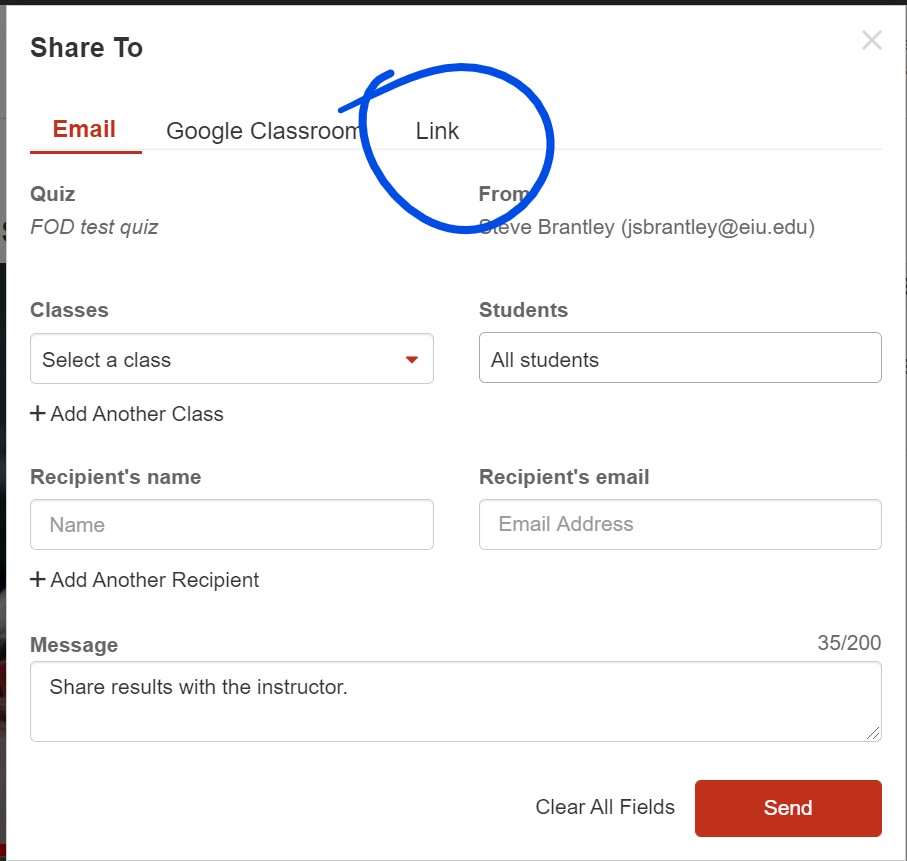
New Concepts in Higher Education
Posted on August 20th, 2019
Prior to the start of the fall semester, Booth Library played host to the New Faculty Orientation led by Professor Newton Key and the Faculty Development and Innovation Center. As a way to welcome all the new faculty to campus, we have curated a display of new and recent titles about current issues and concepts in higher education, teaching, creative pedagogy, student learning, professional development, and more. These books are located in the West Reading Room and are available to browse or check out at your convenience.
Attack of the ’90s!
Posted on June 24th, 2019
Remember the ’90s? If you don’t now, you soon will! The 1990s arguably gave us some of the greatest films ever produced, and we’ve put together a handsome collection of them up here on the 4th floor, ready to be checked out. 20 years since it came to a close, the ’90s is a decade that continues to resonate and influence popular culture, and rightfully so. Where would we be without Jurassic Park? And perhaps more importantly, where would we be without Space Jam? Certainly nowhere near as excited about this display.
Thousands of creative works enter the Public Domain in 2019
Posted on February 13th, 2019
On January 1, 2019, an array of songs, films, and books from 1923 entered the public domain. For the first time in twenty years, people will have free access to films such as Cecil B. Demille’s The Ten Commandments and silent films starring Buster Keaton and Charlie Chaplin; literary works by Robert Frost and Aldous Huxley; and music from dawn of the jazz age, including the Charleston and the Foxtrot.
http://www.youtube.com/watch?v=FQ7SNTSq-9o
Works being available in the public domain means that the copyright protections on them have expired, making them free for anyone to use and build upon. If you’re a student or teacher, this means you are now free to use these materials for your education or research. Artists can create picture books centered around the lyrics of a playful 1920s tune. YouTubers and filmmakers are free to use clips of these movies or even create their own version of them. If you are a fan of a popular literary work in the public domain, you can revisit the story from the point of view of another character. The sky is the limit!
While copyright protects the creator of a work from their intellectual property being stolen or misused, it can also have the adverse effect of restricting how the work is made available or re-used. When creative works enter the public domain, an opportunity is created for obscure, or less well-known titles to be rediscovered and have new life breathed into them. The best examples of this include the highly acclaimed classic Christmas story It’s a Wonderful Life, which entered the public domain in 1975 and, despite being a box office disappointment when it was first released in 1946, became a Christmas classic after television networks were free to air the film during the holiday season.
To find out more about public domain and copyright laws, we recommend you listen to NPR’S 1A podcast “Surveying the Public Domain.” You can find over 50,000 public domain titles on digital libraries such as HathiTrust and The Internet Archive. You can also find numerous titles about copyright and the intellectual property in Booth’s collections.
What is “Open Access” and why should I care?
Posted on October 22nd, 2018
 This week Booth Library celebrates International Open Access Week. But just what does Open Access mean, and why should we celebrate it?
This week Booth Library celebrates International Open Access Week. But just what does Open Access mean, and why should we celebrate it?
There are many easily accessible definitions of Open Access available through a quick internet search, some long, some very brief.
When people talk about Open Access, they are not just talking about any free information on the internet. Open Access refers to the products of academic research, such as journal articles, books, scientific reports, and other results of scholarly inquiry which, under historical and contemporary publication practices, been communicated through commercial publishers, or by small (and some large) scholarly societies.
There are many resources to help you learn more about Open Access publishing and
University of Plymouth, England Deputy Vice Chancellor Jerry Roberts shares his thoughts and experience with Open Access Research




